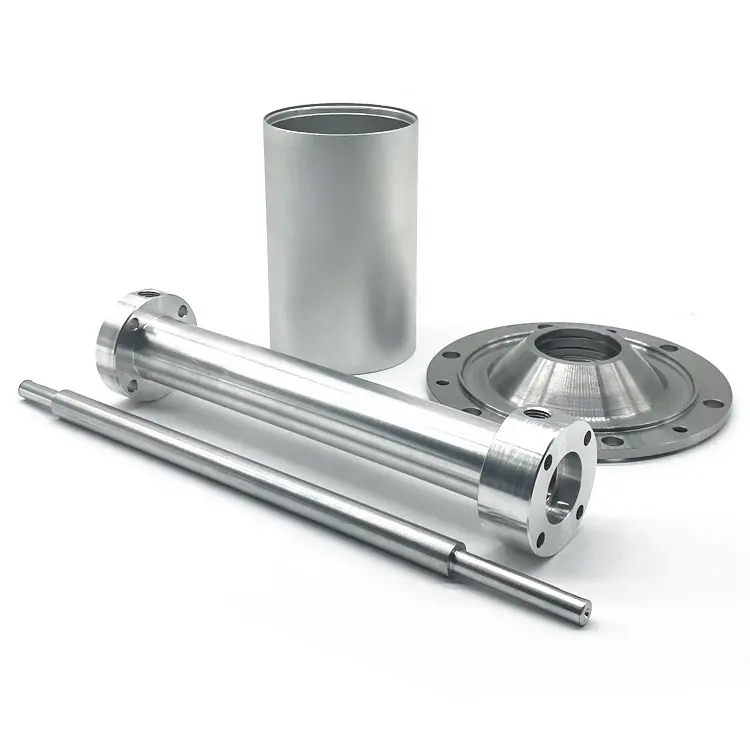CNC machining is frequently utilized in the production of high-precision copper precision parts. This method incorporates a variety of processes, including milling, grinding, and turning, among others. When processing, it is necessary to keep in mind the following issues and concerns. During the processing of copper, ductility is the first thing that must be considered, depending on the properties of the metal. Workpieces that have good ductility tend to be on the softer side. Copper is an excellent conductor of heat and electricity and is difficult to saw. During processing, cutting feed speed is an important factor to take into consideration.
The hardness of copper is relatively low, which is something that needs to be taken into consideration. This will have an effect on the quality of the surface of the tool as well as the durability of the tool. The surface of the processed workpiece is also susceptible to noise and water ripples as a result of the processing. Since pure copper has a high expansion coefficient and is easily deformed when subjected to the influence of cutting temperature, it can be challenging to maintain accurate control over the finishing size and shape. Because copper generates a lot of heat during the cutting process and has a relatively high level of toughness and plasticity, the workpiece and the tools used to cut it need to be relatively sharp.
When high-speed milling of copper processing products is performed with a CNC vertical machining center, the cutting resistance of the copper processing products decreases as the cutting speed increases, and the cutting deformation coefficient of the copper processing products is greatly reduced. Copper alloys can have a very good surface quality when milled at high speeds, which can reduce the need for subsequent finishing operations. During the process of cutting copper cutting parts, the surface quality improves as CNC prototyping the cutting speed goes up, but it deteriorates as the feed rate goes up. However, increasing the feed rate has a greater impact on the surface quality when performing high-speed machining as opposed to performing low-speed machining.
Copper components have a high resistance to corrosion and, under typical circumstances, do not need to have their surfaces treated in any way. Nevertheless, in order to fulfill the surface treatment requirements of high-precision copper parts, it is sometimes necessary to carry out a number of surface treatment processes. The process of electroplating entails submerging the part to be plated in an aqueous solution that contains a compound of the metal to be plated, passing an electric current through the plating solution, and then partially precipitating the metal to be plated. In a general sense, black boiling refers to the process of electroplating various metals, such as zinc, copper, nickel, copper-nickel alloy, etc. , and also includes phosphate, etc.
The surface of the product is altered through the process of mechanical electroplating, which involves coating metal particles and allowing the coating to cool to the surface of the product. The carbon steel sections are given their finish by being submerged in a bath of molten zinc that has been heated to approximately 510 degrees Celsius. Because of this, the iron-zinc alloy that was originally on the surface of the steel gradually transforms into passivated zinc on the product's exterior surface. When making precision copper parts, the step known as "surface treatment" involves applying a coating of some kind to the surface of the workpiece in some fashion. On precision copper components, its function is to impart both a beautiful finish and an anti-corrosion effect on the surface of the component.

What are the prerequisites for the fixture of the computer numerically controlled machining center?
What are the prerequisites for the fixture of the computer numerically controlled machining center?.
The CNC machining center has the fixture built right in as an essential component. The requirements for the fixture will vary depending on the product that is being processed, and it is imperative that the appropriate fixture be used at all times. In general, the following characteristics are required to be present in the fixtures used in CNC machining centers. Extremely high precisionWe are aware that CNC machining centers have a very high level of precision, and as a result, they are typically utilized in the processing of molds and parts that require a high level of precision. As a consequence of this, the CNC machining center has relatively stringent requirements for the accuracy of positioning.
The combination of ease and swiftnessFixtures that are both convenient and quick to install are frequently required in order for machining centers to meet the requirements for high-speed processing. As a result, high-speed locking power, such as hydraulic or pneumatic, is frequently utilized. Hydraulic clamps are typically used whenever the processing time for the workpiece will be lengthy. During the processing, any internal leakage must be compensated for in order to prevent the clamp from becoming too loose.
The processing of a high-quality open CNC machining center is accomplished through the use of a contact feed that involves the tool and the workpiece. The workpiece should be clamped by the fixture to provide a relatively spacious operating space in Copper CNC Machining order to realize the rapid movement of the workpiece and the quick operation of tool change. This is necessary in order to realize both of these goals. The structure of the fixture should be straightforward, user-friendly, and quick. It should also be as open as possible, so that the tool can enter and exit the fixture with minimal effort, and so that the fixture is not adversely affected by the machining operation. This is especially important for complicated workpieces that require multiple tool changes. Accidental collision with the workpiece.

High adaptabilityBecause of the wide variety of workpieces that are processed by CNC machining centers, the fixtures used in these centers need to be able to accommodate a wide range of workpiece contours. At the present time, 3D printed homes are being CNC machining steel utilized in a variety of settings all over the world. Despite the fact that there is no application on a large scale, the trend is heading in the right direction. They frequently face difficult traffic conditions and lengthy distances, both of which contribute to relatively high construction costs in certain economically depressed regions. Printing in three dimensions can be an effective solution to these issues. The issue of high labor costs is one that people in economically developed areas must contend with; however, the use of 3D printing can also be an effective solution to this issue.
Obviously, there are some drawbacks associated with 3D printing houses. To begin, the only part of the house that can be printed using 3D printing is the wall. The installation of individual components such as doors, windows, the roof, and so on is required, while the construction of the foundation will involve pouring concrete. In addition to this, it is challenging to print directly on the dividers that exist between the floors. Either conventional partitions or prefabricated panels that have been printed are utilized, with the latter option requiring the use of a crane for their attachment to the wall.







